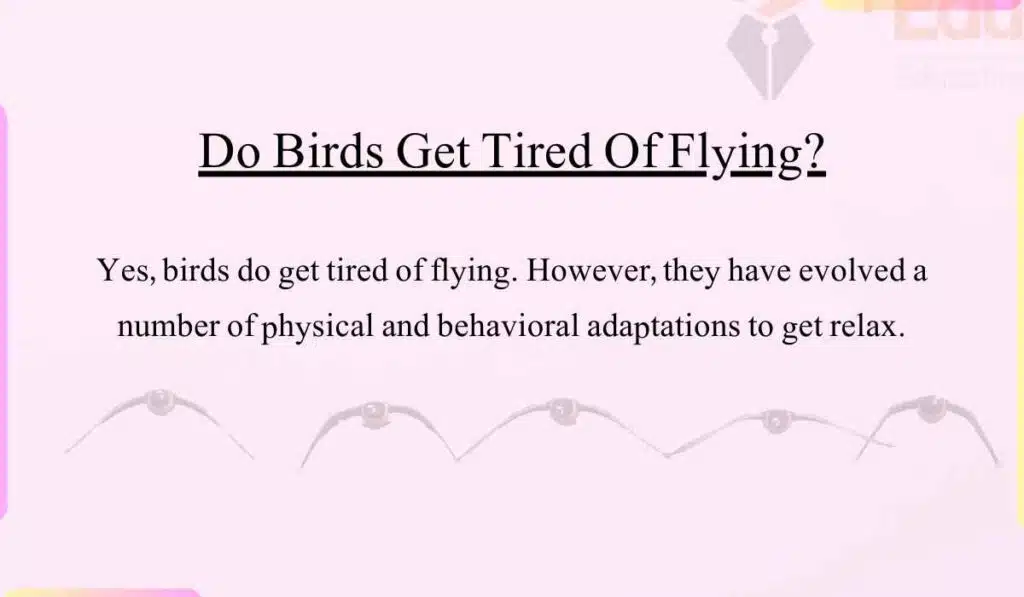Do Birds Get Tired Of Flying?
Yes, birds do get tired of flying. However, they have evolved a number of physical and behavioral adaptations that help them conserve energy and fly for long periods of time.
These adaptations allow birds to make long-distance migrations and explore new habitats.

Physical Adaptations
Birds have evolved a number of physical adaptations that help them fly for long periods of time.
These physical adaptations help birds to fly for long distances, which allows them to make long-distance migrations and explore new habitats.
These adaptations include:
1. Hollow Bones
Hollow bones are much lighter than solid bones, which helps to reduce the weight of the bird and make it easier to fly.
This is because hollow bones are filled with air, which is much less dense than bone. This makes the bird more buoyant, which helps it to stay afloat in the air.
2. Light Weighted Feathers
Bird’s feathers are also very lightweight, which helps to reduce drag and improve aerodynamics.
This is because feathers are made of keratin, which is a very lightweight material. The feathers also have a smooth surface, which helps to reduce drag.
3. Efficient Metabolism
Birds have an efficient metabolism, which means that they are able to extract more energy from the food they eat. This allows them to fly for longer periods of time without needing to refuel.
Different Ways That Birds Rest While They Are Flying
Birds have a number of ways to rest while they are flying. These different ways of resting help birds to conserve energy while they are flying, which allows them to fly for long distances.
These ways include:
1. Soaring
Soaring is a type of flight that allows birds to glide without flapping their wings. This is done by taking advantage of thermals, which are rising columns of warm air.
Thermals can provide birds with a lot of lift, which allows them to travel long distances without expending a lot of energy.
2. Sleeping With One Half of the Brain
Some birds are able to sleep with one half of their brain while the other half remains awake. This allows them to rest without losing control of their flight. This is called unihemispheric sleep.
3. Taking Short Breaks To Refuel
Some birds will take short breaks to refuel, often landing on water or on the ground. This allows them to rest and eat, which gives them the energy to continue their journey.



Leave a Reply